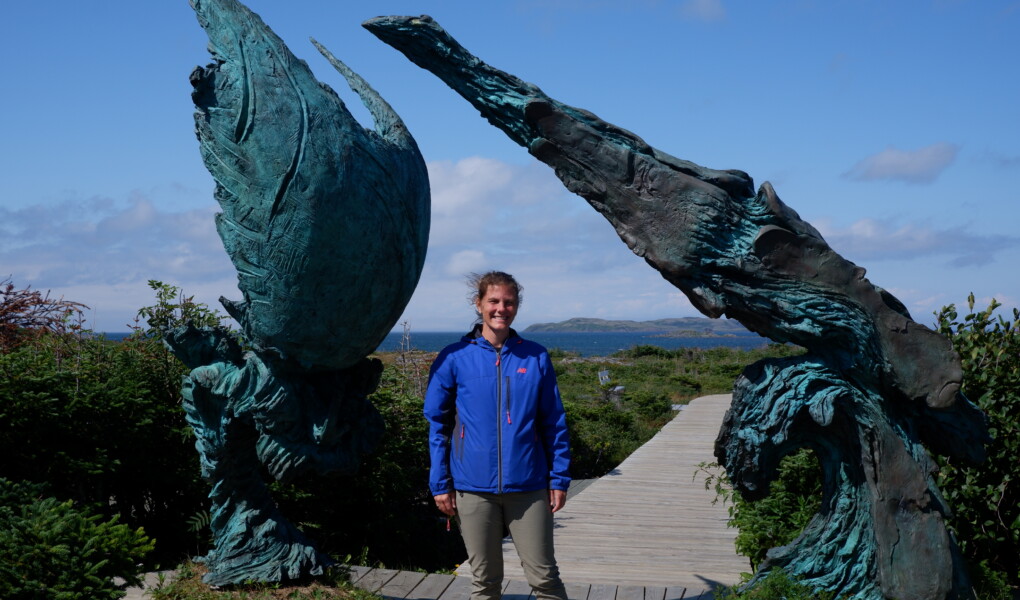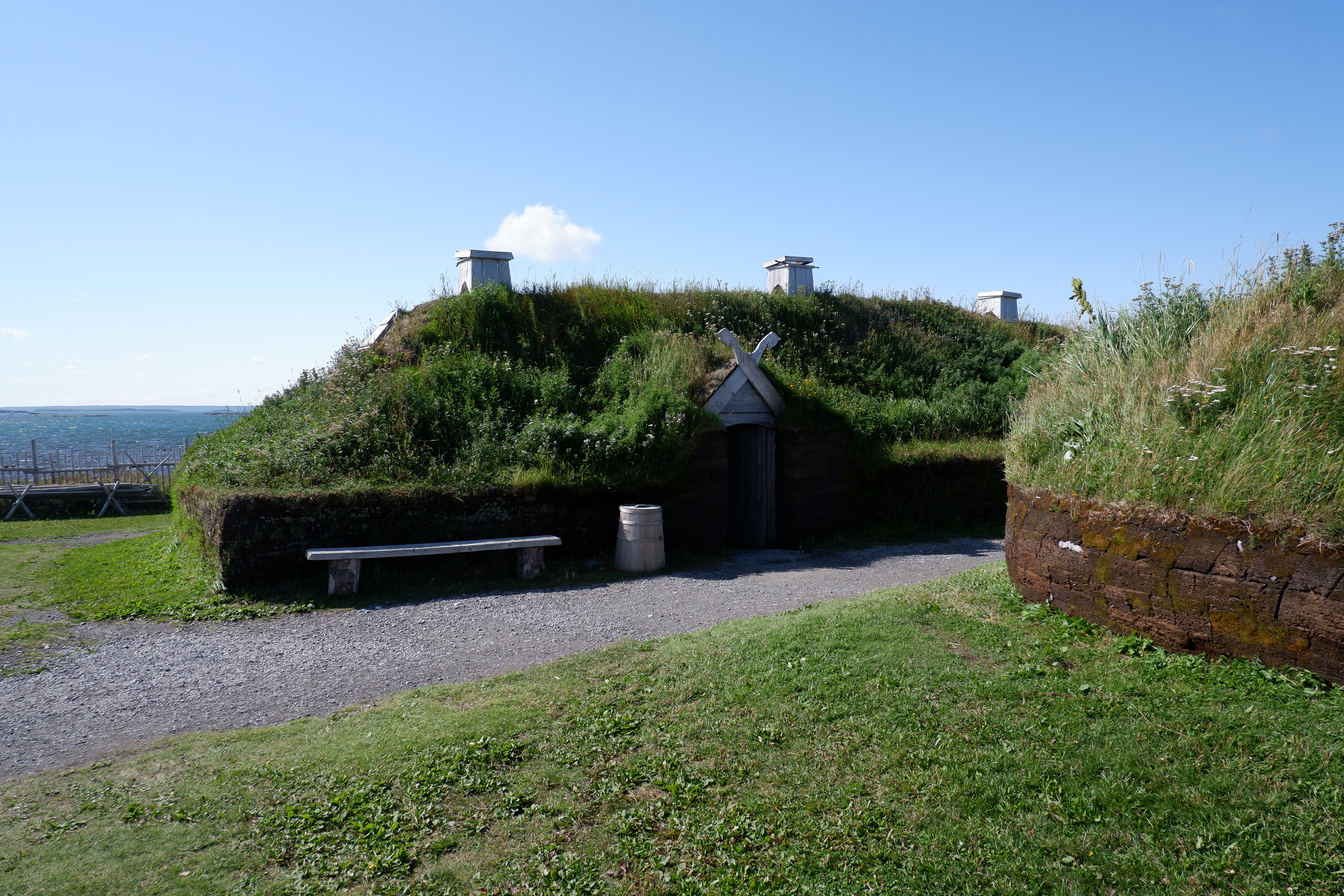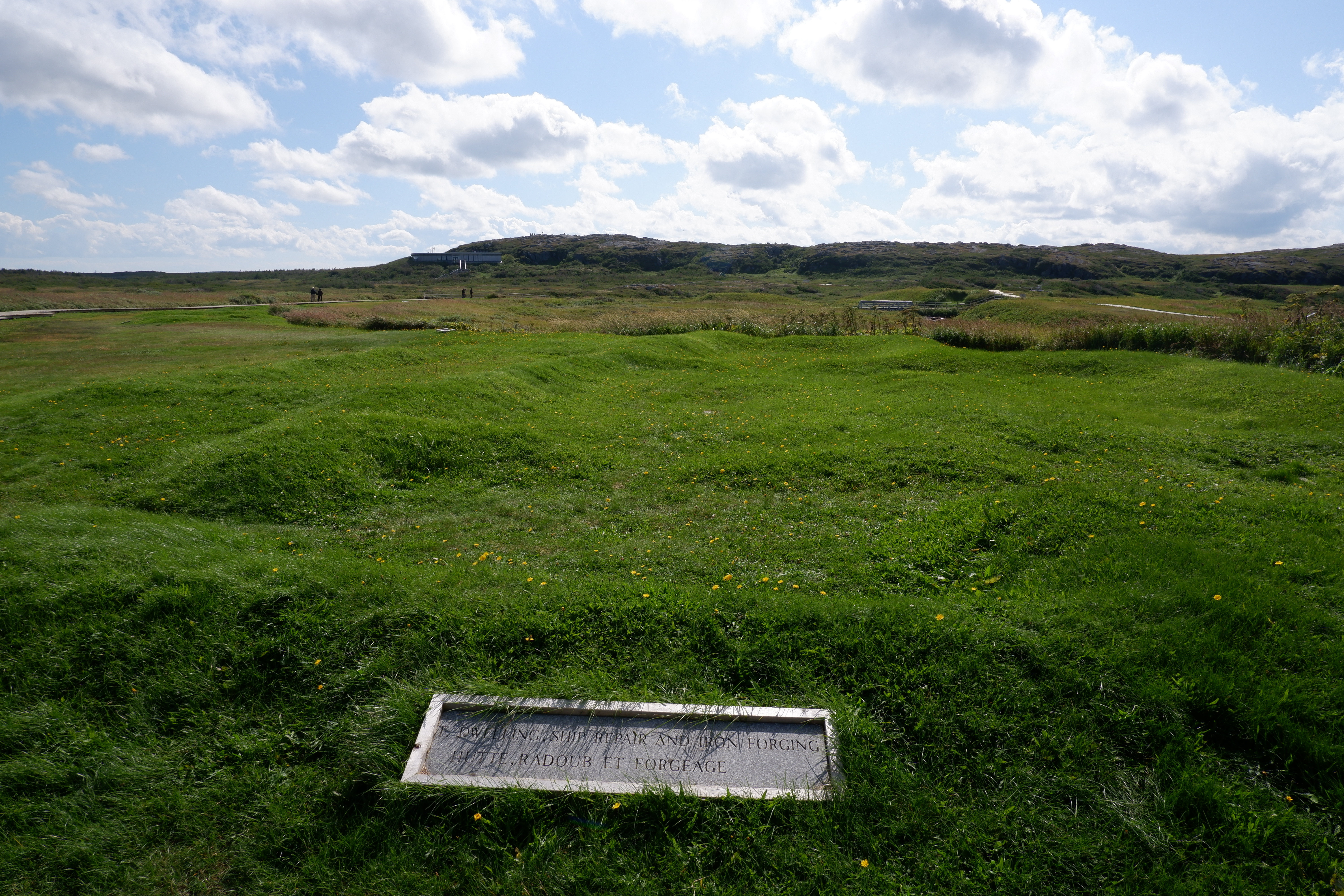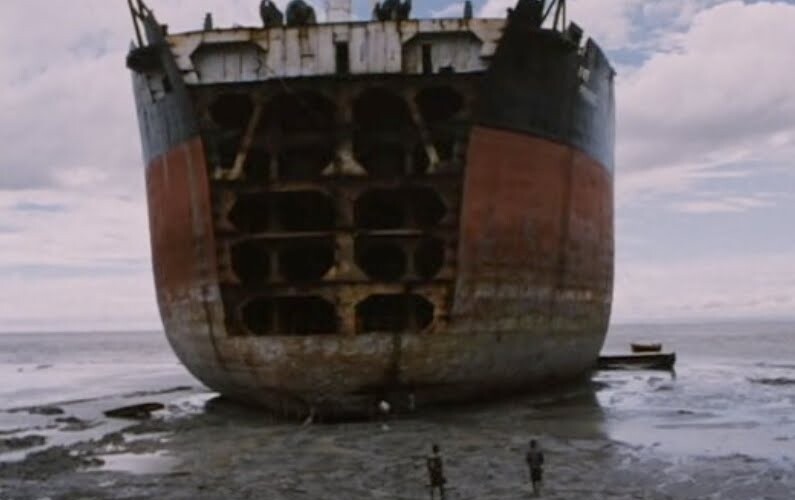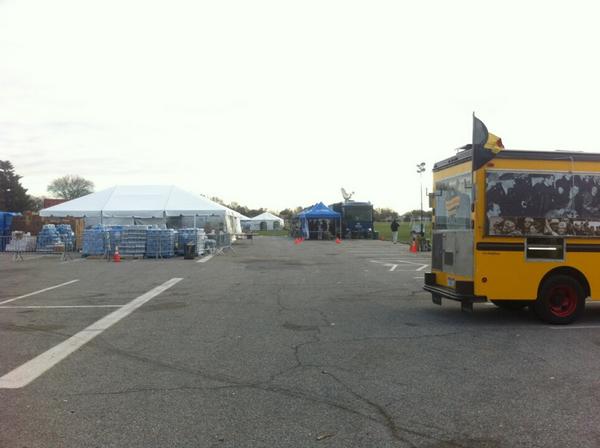We couldn’t let Leif Erikson Day pass without boasting that we stood in his bedroom. And not in Norway or Iceland or Greenland, but right here in North America, at L’Anse aux Meadows, a National Historic Site and UNESCO World Heritage Site on the northern tip of Newfoundland. But to understand what this place is, and what it has to do with October 9, we actually need to walk back through three separate journeys.
First, how did we wind up there? Last month, Cindy and I spent eight days in Newfoundland for our (five-year-delayed) honeymoon. We traveled up the island’s west coast from Gros Morne National Park (also a UNESCO site) to Quirpon Island in the extreme north, and L’Anse aux Meadows was a stop along the way.
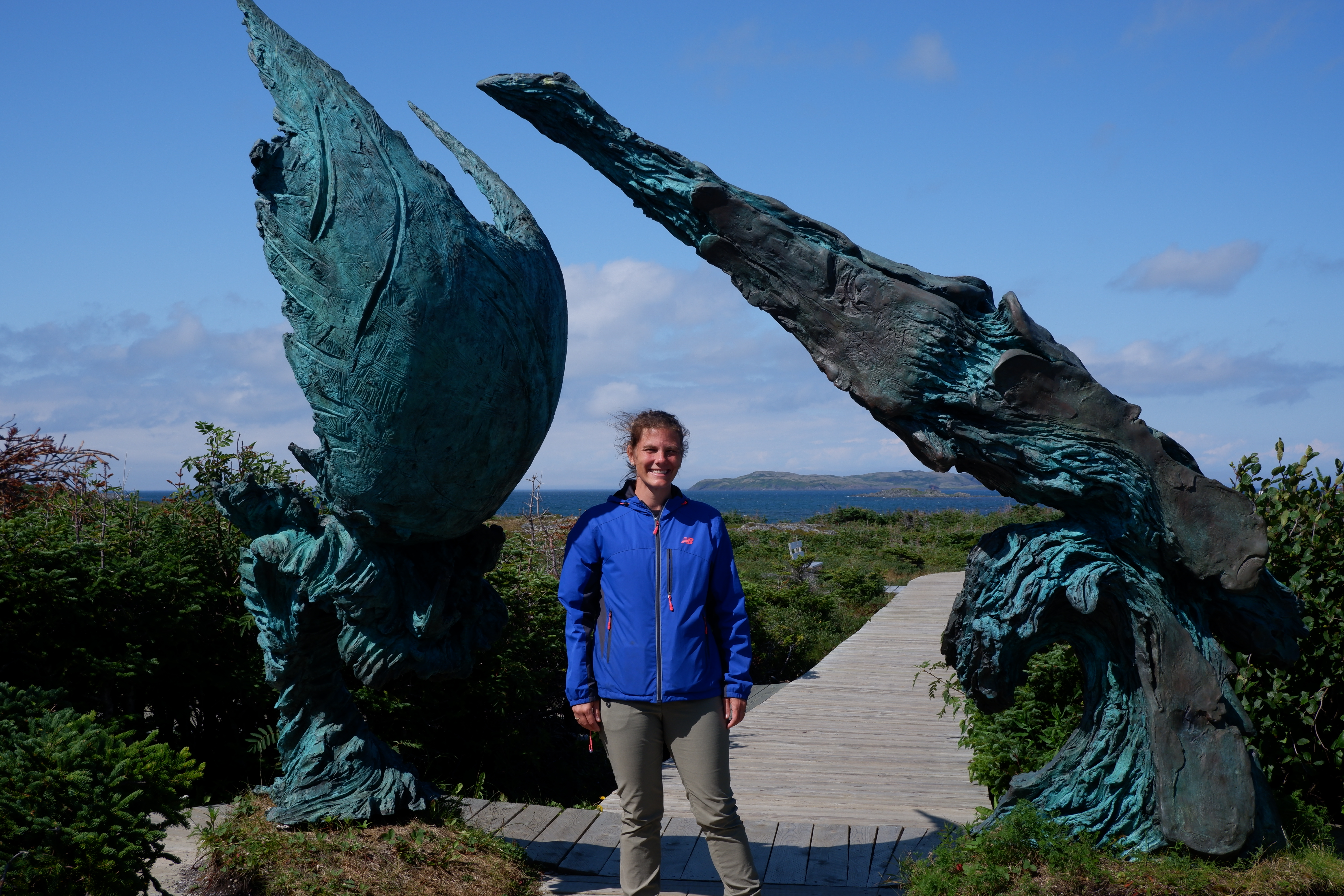
First identified in 1960 by Norwegian archaeologists Helge Ingstad and Anne Steine Ingstad, the site at L’Anse aux Meadows was long thought to be a burial ground for First Nations peoples. But the Ingstads, scholars of the Norse Sagas, had a hunch that an expedition from Greenland led by Leif Erikson had built an encampment somewhere around the Gulf of St. Lawrence, so-called “Vinland,” and they scoured New England, Quebec, and the Canadian Maritime Provinces for clues. The excavations ultimately yielded irrefutable proof – a bronze cloak pin, a needle, a spindle, and the outlines of several sod and timber buildings – that Norse people had been there. The site became a national park in 1968, and earned UNESCO recognition 10 years later.
You may think that perhaps October 9 was the day that Erikson arrived in Vinland. The Sagas provide a lot of incredible detail, but not the exact day that the Vikings arrived. Nor is it Erikson’s birthday, also unknown. The date is actually connected to a completely different journey across the Atlantic Ocean: on October 9, 1825, the first large group of Norwegians to emigrate to the United States arrived in New York aboard the sloop Restauration. Auspiciously departing on July 4 from Stavanger, the arrival of this small sailing vessel with 46 passengers, most of them Quakers, and seven crew was notable at the time. The New York Daily Advertiser wrote:
The appearance of such a party of strangers, coming from so distant a country, and in a vessel of a size apparently ill calculated for a voyage across the Atlantic, could not but excite an unusual degree of interest. They have had a voyage of fourteen weeks, and are all in good health and spirits. An enterprise like this argues a good deal of boldness in the master of the vessel, as well as an adventurous spirit in the passengers.
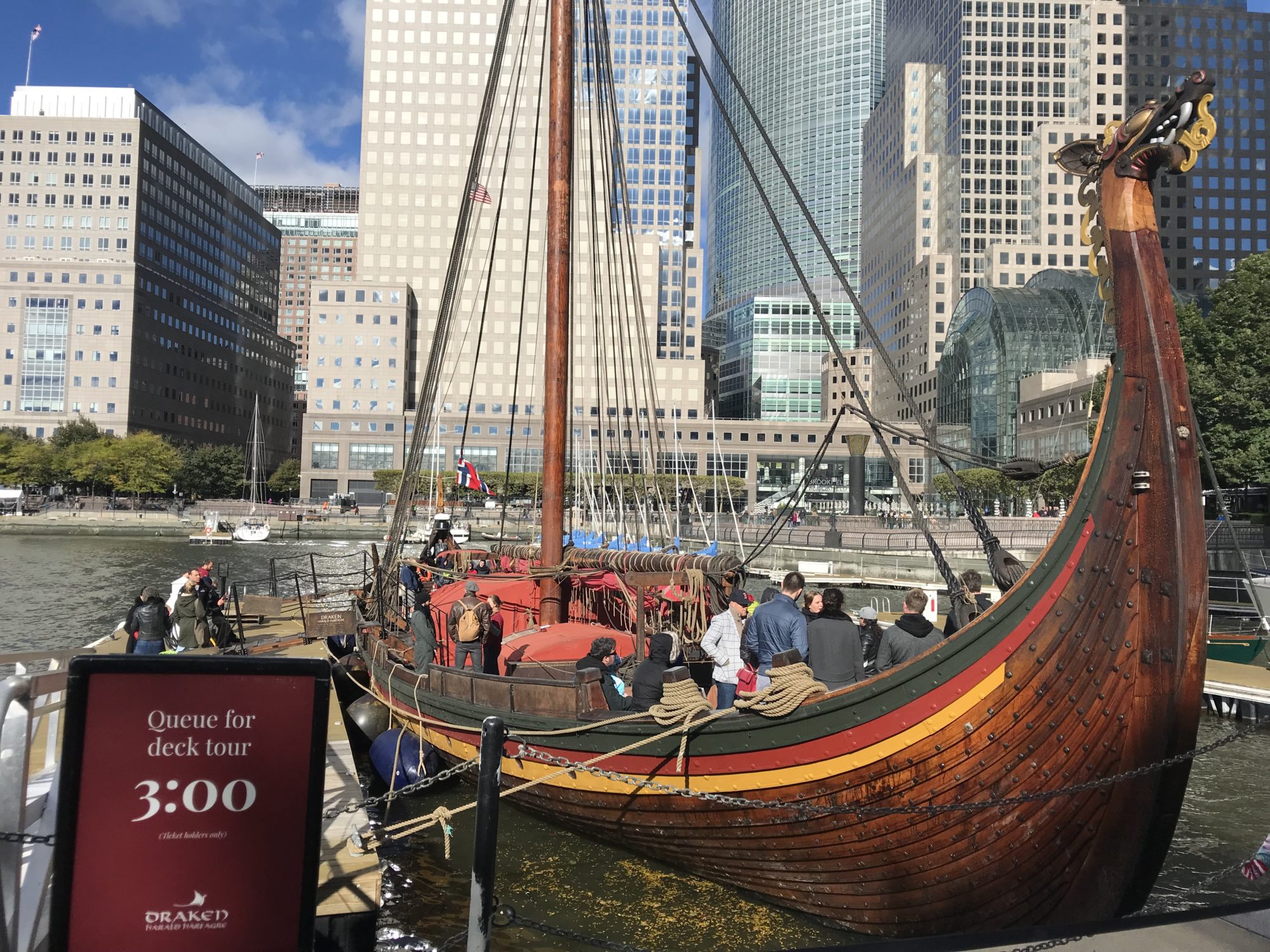
Built as a herring boat, the ship was just 39 tons and 54 feet long; as Ingrid Simmingsen notes in her book Norway to America, this was just one-quarter the size of the Mayflower. Unfortunately, the vessel was not just “ill calculated,” it was dangerously illegal to make such a crossing. Its small size violated the 1819 Steerage Act, which regulated the size and conditions of ships carrying international passengers, and set requirements for submitting passenger manifests. Technically limited under the law to just 16 passengers, Restauration was seized by US authorities. Eventually the legal difficulties were sorted, thanks to the intervention of friendly American Quakers and President John Quincy Adams, and the new immigrants could make their way to their ultimate destination in Orleans County, New York.
The only commercial cargo that these Norwegians carried with them was 20 tons of iron. Ironically, this was the one product their forebears actually produced in the New World, as the Vikings built a foundry to smelt bog iron into nails for shipbuilding. Also unlike the group in 1825, the people that arrived in Newfoundland around the year 1000 did not cross the ocean to make a new life for themselves; the journey was a strictly commercial enterprise.
Tasked with supplying the foundering colony in barren Greenland with much-needed timber, furs, and other supplies. L’Anse aux Meadows was a staging base for traveling further south and west to find these goods. Archaeological evidence of seeds and nuts suggests they did range as far as Nova Scotia, and possibly into the present-day United States – maybe even into New York Bay.
The first expedition was led by Erikson himself, a small group of 35 or so men that spent one winter in Newfoundland. Two more parties traveled to the site over the next 10 years, and fewer than 400 Europeans ever set foot in Vinland; only one, Snorri Thorfinnsson, was born there. It was never a large settlement; archaeologists have uncovered the remains of eight buildings, and they can identify the likely uses of these buildings and of the individual rooms. Today they are just barely noticeable rises in the turf – and there’s no sign that says “Leif Erikson Slept Here” – but we can be pretty sure which exact patch of turf he did call home.
So whether you’re staring across the Labrador Strait or across the Narrows, know that you’re looking across the same waters that adventurers of “boldness” and “adventurous spirit” sailed across to find a new life and new opportunity, and that’s whom we salute on October 9.
(Also, Columbus Day is terrible and New York should either (a) celebrate Indigenous Peoples Day, or (b) find a less reprehensible Italian to honor in October. As a proud Italian-American, I would much rather celebrate Garibaldi Day or Marconi Day.)
[snippet slug=’boat-tours-footer’]

